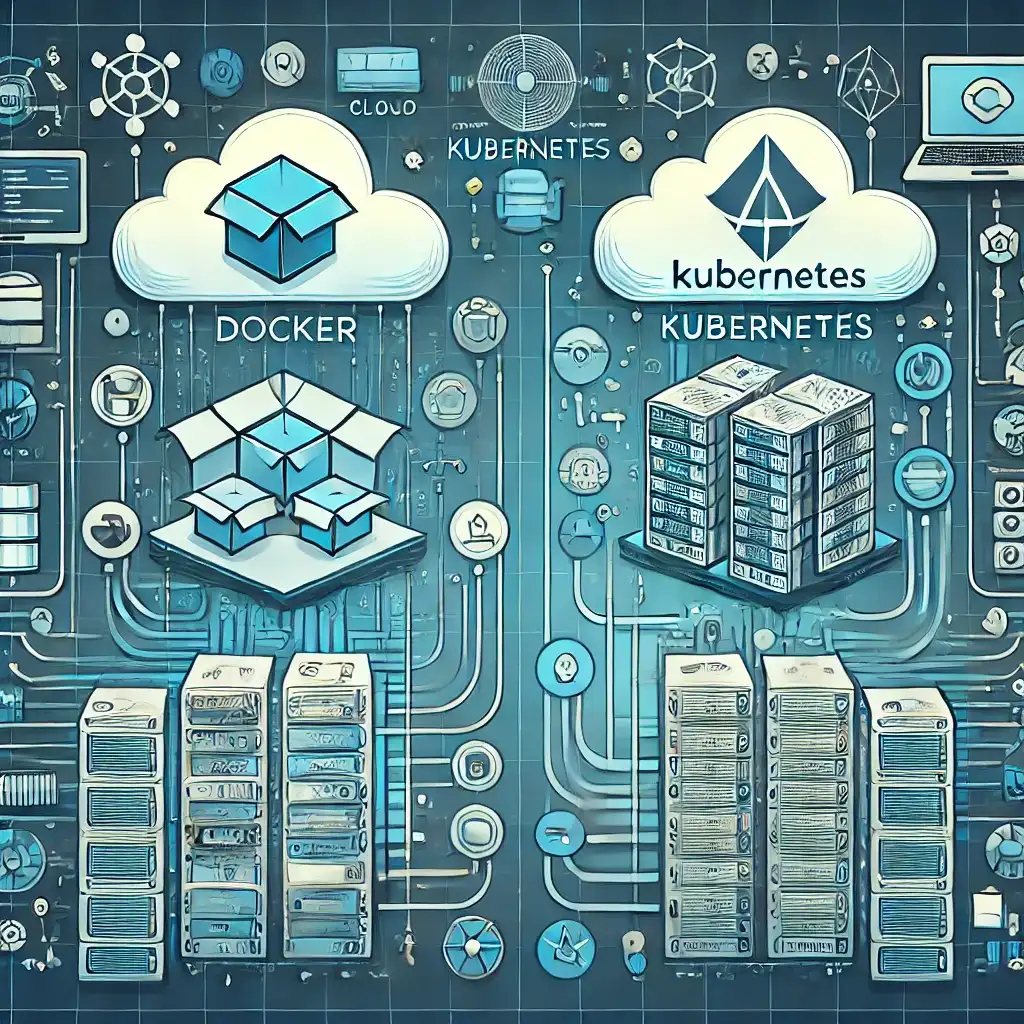
Modern applications today are often deployed using container technologies. Docker and Kubernetes are two essential tools that simplify software deployment, scalability, and management.
This guide will walk you through the basics of Docker and Kubernetes, their differences, and how to use them effectively.
1️⃣ What is Docker? 🐳
Docker is a container-based virtualization platform used to run applications in isolated environments called containers.
🔹 Advantages of Docker:
- Lightweight and portable
- Fast setup and deployment
- Independent environments
- Compatible with microservice architecture
Installing Docker 🔧
Install Docker on Linux:
sudo apt update && sudo apt install docker.io -y
sudo systemctl start docker
sudo systemctl enable dockerCheck Docker version:
docker --version2️⃣ Basic Docker Usage
📌 Run a Docker container:
docker run hello-world📌 List containers:
docker ps -a📌 Remove a container:
docker rm container_id📌 List Docker images:
docker images📌 Create a custom container with Dockerfile:
FROM ubuntu:latest
RUN apt update && apt install -y nginx
CMD ['nginx', '-g', 'daemon off;']This Dockerfile launches an NGINX web server.
3️⃣ What is Kubernetes? ☸️
Kubernetes (K8s) is an open-source container orchestration platform used to automate the deployment, scaling, and management of Docker containers.
🔹 Advantages of Kubernetes:
- Automatic load balancing
- Scalability
- Container automation
- Fault tolerance and self-healing
4️⃣ Key Components of Kubernetes
- Pod: The smallest deployable unit in Kubernetes. It can contain one or more containers.
- Node: A physical or virtual machine in the Kubernetes cluster.
- Cluster: The full structure including all Kubernetes components.
- Deployment: Ensures that the desired number of container replicas are running.
- Service: Provides network access to pods.
5️⃣ Installing Kubernetes (with Minikube)
Minikube allows running Kubernetes locally.
🔹 Install Minikube:
curl -LO https://storage.googleapis.com/minikube/releases/latest/minikube-linux-amd64
sudo install minikube-linux-amd64 /usr/local/bin/minikube🔹 Start Minikube:
minikube start🔹 Create a Pod:
kubectl run nginx --image=nginx --port=80🔹 List Pods:
kubectl get pods🔹 Create a Service:
kubectl expose deployment nginx --type=LoadBalancer --port=80Docker and Kubernetes enable fast, portable, and scalable deployment of modern applications. Docker simplifies container creation and management, while Kubernetes provides robust tools for managing containers at scale.
Related Articles

Installing Apache Tomcat Server on Ubuntu

Linux Shell – Simple Backup Script






